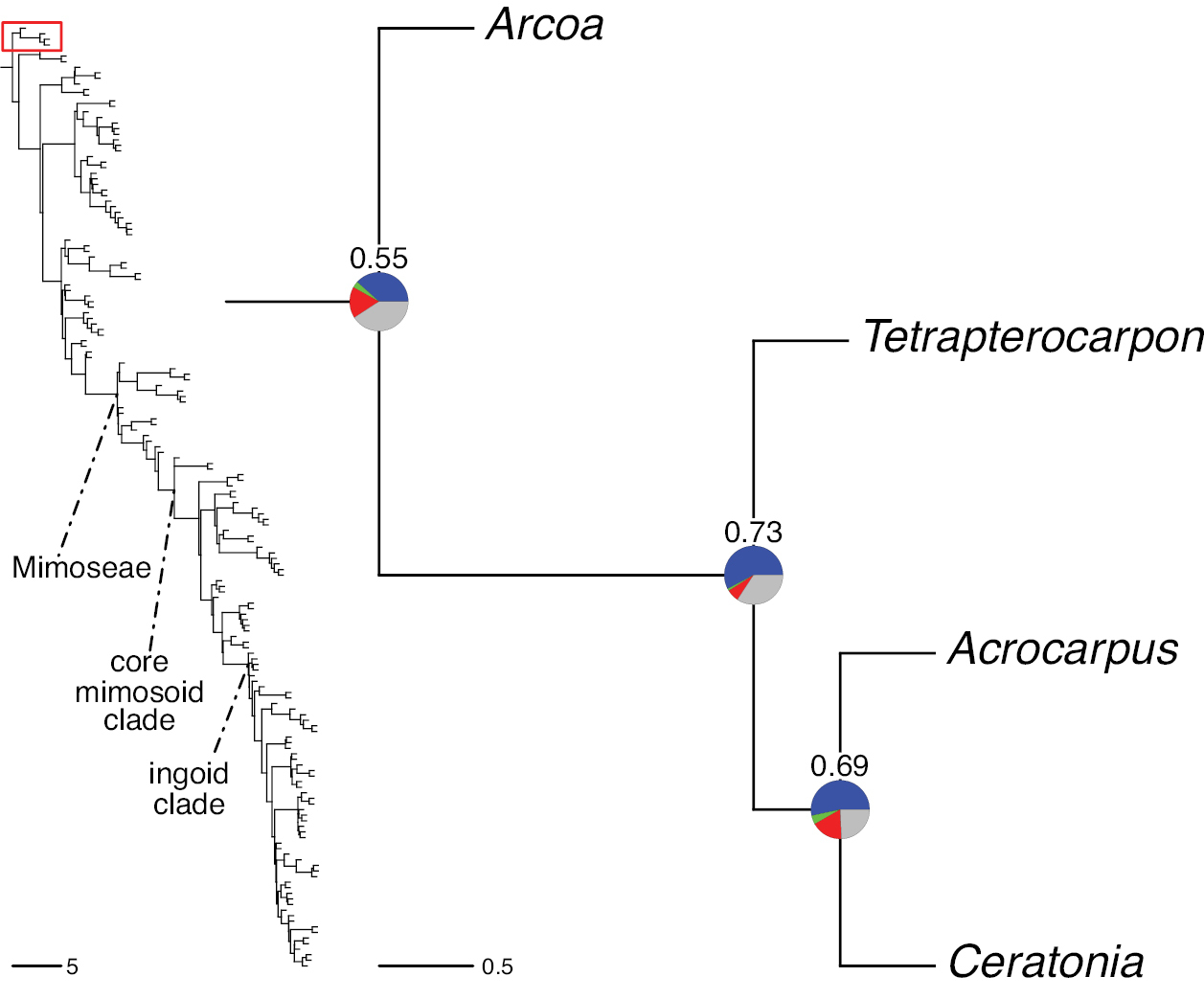
|
||
|
Generic relationships in tribe Ceratonieae. Left part of figure shows complete genus-level Caesalpinioideae phylogeny with the Ceratonieae indicated with a red rectangle. Branch lengths are expressed in coalescent units and terminal branches were assigned an arbitrary uniform length for visual clarity. Support for relationships is based on fractions of supporting and conflicting gene trees: pie charts show gene tree support and conflict per node (blue representing supporting gene trees, green gene trees supporting the most common alternative topology, red gene trees supporting further alternative topologies, grey gene trees uninformative for this node), and numbers above pie charts are Internode Certainty All support values [both calculated with PhyParts (Smith et al. 2015)]. If present, red numbers below pie charts are non-significant (i.e. > 0.05) outcomes of ASTRAL’s polytomy test (Sayyari and Mirarab 2018), which tests for each node whether the polytomy null model can be rejected. Monophyletic genera are represented by single branches; see Suppl. material 2 for a phylogeny with all accessions. See Suppl. material 3 for gene tree support across the phylogeny. The phylogeny is a pruned version of the backbone phylogeny of Ringelberg et al. (2023), where full details of the data and phylogenomic analysis methods are presented. |